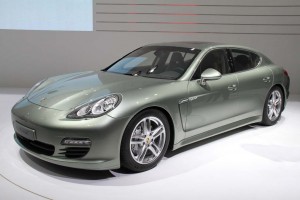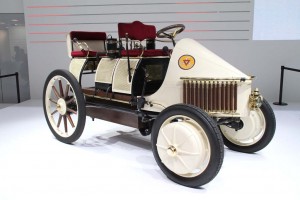Few brand names generate as clear and immediate an image as Porsche. But while most motorists will readily associate the brand with high performance sports cars, founder Ferdinand Porsche was arguably one of the pioneers of environmentally friendly automobiles, developing what was arguably the world’s first hybrid automobile.
So, perhaps it’s fitting that the maker is now making an aggressive push into battery power, with its new Panamera S Hybrid making its formal debut at this year’s very eco-conscious Geneva Motor Show.
The second Porsche to use a gasoline-electric driveline is a version of the German maker’s popular – if controversial – 4-door coupe-like sedan. Set to go on sale next year for $95,975, the Porsche Panamera S delivers the performance long associated with the brand yet boasts a Combined fuel economy rating of 33.1 mpg.
The trick is pairing a 3.0-liter supercharged V6 developing 330 horsepower with a 47-hp electric motor/generator. That part of the driveline relies on a set of nickel-metal hydride batteries packed into the trunk. Under full acceleration, the system can call on a combined 380-hp, enough to launch it from 0 to 60 in 5.7 seconds and push it to a top speed of 167 mph.
L
Green-minded motorists will get a special display on the navi screen that keeps them up to date on what the complex driveline is doing at any particular moment.
The well-equipped Porsche Panamera S Hybrid will come standard with features like the maker’s Adaptive Air Suspension system and adaptive active shocks.
That’s a fair bit more sophisticated than what was offered to those driving the original Lohner-Porsche Mixte hybrid, which Ferdinand Porsche developed for Viennese coachbuilder Jacob Lohner in 1900.
Yet, the Mixte might be considered advanced technology even today, with its frictionless driveline. Instead of using a driveshaft, chain or belt, the horseless carriage used hub-mounted electric motors, a concept being actively studied today.
But it was clearly not a performance machine, those motors normally producing about 2.5 to 3.5 hp each – and for short bursts as much as 7 horsepower.
The design of the Lohner-Porsche was reportedly studied and borrowed from by the team that developed the lunar buggy used during the Apollo moon missions.


